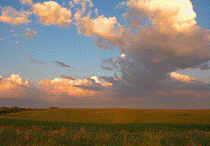North American Prairie Conference
Date of this Version
1989
Document Type
Article
Abstract
The effects of burning, mowing, and nitrogen fertilizer on the chlorophyll, nitrogen, and phosphorus content of big bluestem were measured using a factorial experimental design at Konza Prairie Research Natural Area. While spring burning usually increased foliage production, burning had no effect on mid-season chlorophyll or nitrogen concentrations. Chlorophyll concentrations were significantly increased by fertilizer and mowing treatments. Nitrogen concentrations of foliage were higher on fertilized and mowed plots. Mowing also increased phosphorus concentrations of foliage, but nitrogen fertilizer significantly reduced phosphorus concentrations. These results support other research indicating that: 1) nitrogen use efficiency (grams biomass produced per gram of foliage nitrogen) is higher on burned prairie, 2) removal of foliage by mowing results in more nutrient-rich regrowth, and 3) the amount of phosphorus available to big bluestem foliage is limited. The dilution of phosphorus caused by added nitrogen was a consequence of increased productivity on these plots and suggests phosphorus uptake in excess of requirements for maximum growth. The relationships between burning, mowing, and nitrogen on the spectral reflectance patterns of vegetation indicated that chlorophyll (or nitrogen) concentrations of foliage appeared to more strongly affect indices of greenness and plant vigor than did the amount of plant biomass.



Comments
Published in Prairie Pioneers: Ecology, History and Culture: Proceedings of the Eleventh North American Prairie Conference, August 7-11, 1988, Lincoln, Nebraska (Lincoln, NE 1989).